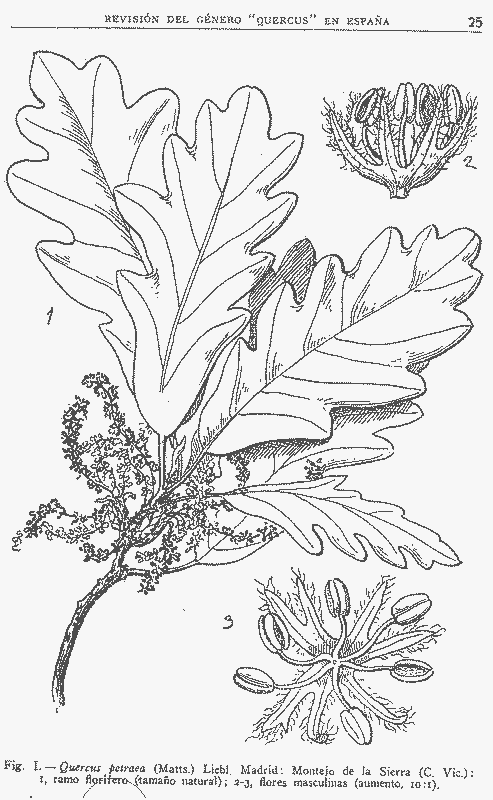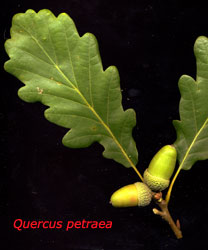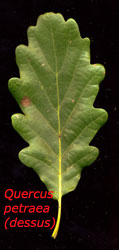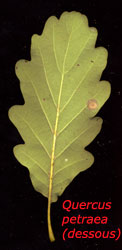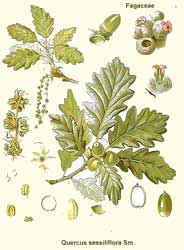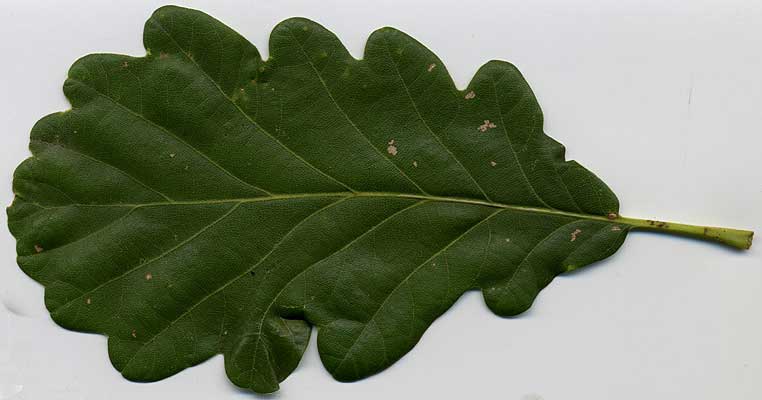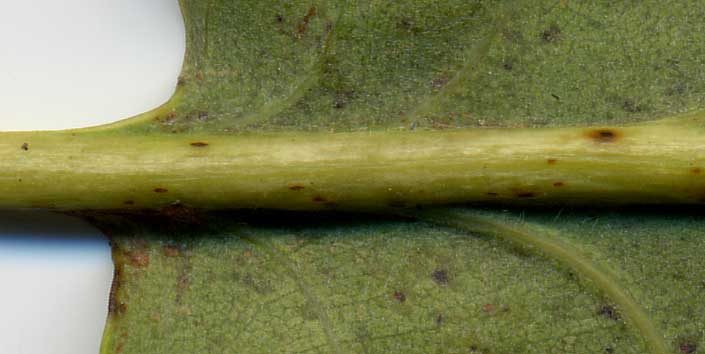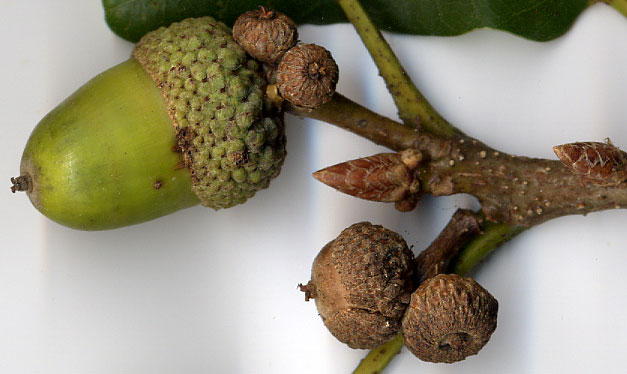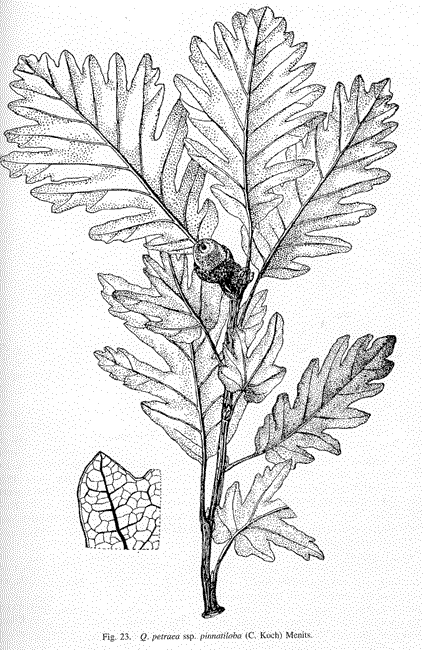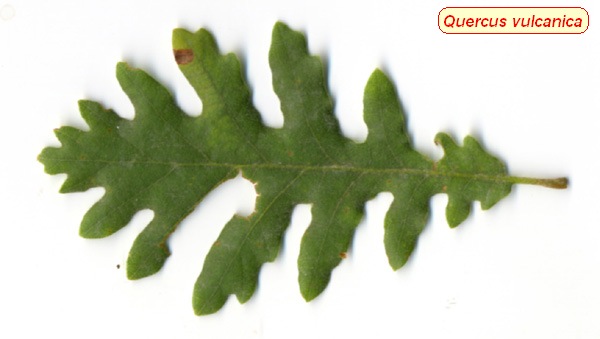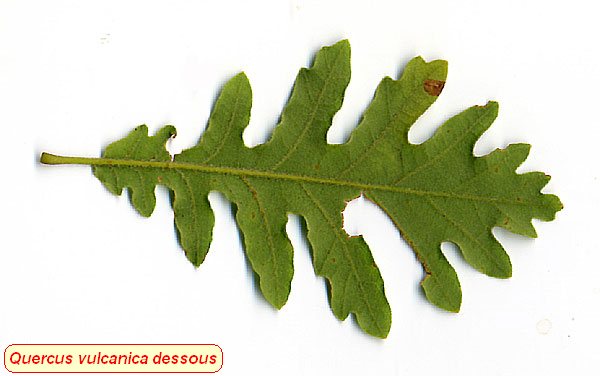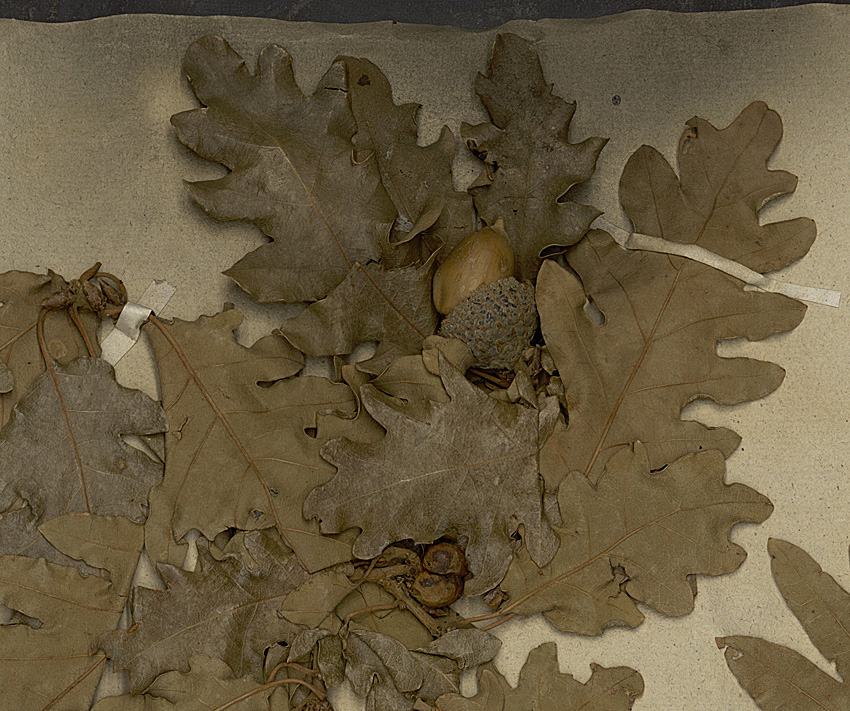| Quercus petraea | |
| Author | (Matt.)Liebl. 1784 Fl. Fuld. 403 |
| Synonyms | auzin Secondat ex Bosc 1807 calcarea Troitzky 1931 columbaria Vuk. 1883 conglomerata Pers. 1807 coriacea Bechst. 1814 coronensis Schur 1866 decipiens Behlen in Bechstein 1814 longipetioleata Schur 1866 mas Thore 1803 mespilifolia Wallr. 1822 petioleata Schur 1857 petraea var. laciniata (Lam.) C.Vicioso 1950 regalis Burnett ex Endl. 1848 robur var. petraea Mattuschka 1779 nom. invalid. robur var. laciniata Lam. 1785 robur var. platyphylla Lam. 1785 robur subsp sessiliflora (Salisb.) A.DC 1864 sessiliflora Salisb.1796, nom. illeg. sessilis Ehrh. ex Shur 1857 sphaerocarpa Vuk. in Schlosser 1876 sublobata Kitoibel 1814 |
| Local names | sessile
oak; |
| Range | Europe; West
Asia; in France, does not occur in Alps, South and South-West; at higher
elevations than Q.robur; |
| Growth habit | 20 m tall usually; may reach 45 m tall, with trunk to 2 m in diameter; |
| Leaves | 6-12 (-16) x
4-7 (-9) cm; stiff; wider near the middle of the blade; base slightly
truncate, or oblique; 5-8 pairs of rounded lobes, with sinuses reaching
sometimes half way to the midrib; hairless (or a few bulbous and solitary
trichomes), shiny, dark green above; dull, pale green beneath, with sessile
fascicled hairs (rays 60-120 µm long) at axils of veins, scattered
4-rayed stellate hairs, and a lack of wax on the stigmas; 5-7(-8) vein
pairs; inconspicuous tertiary veins; sinusal veins present; petiole
1-3 cm long, yellowish green, hairless, sulcate above; |
| Flowers | April-May; male
catkins golden brown, drooping, 5-8 cm long, pubescent; pistillate inflorescences
towards tip of new shoot, 2-6 together; |
| Fruits | acorn 1.5-4
cm long, 1-2.5 cm in diameter, ovoid; enclosed 1/3 by cup; cup sessile
or nearly so, with appressed, brownish, pubescent, oval lanceolate scales,
almost flat above; maturing in 1 year in September-October; stylopodium
hairy; basal scar flat; |
|
Bark, twigs and |
bark
grey, finely fissured, becoming crackled; twigs grey brown, shiny, hairless,
angled, with small tawny lenticels; buds pointed, crowded at tip of shoot,
4-9 cm long; |
| Hardiness zone, habitat | hardy;
not quite whithstanding late frost; all types of soils, including poor,
calcareous ones, but prefers acidic and well drained ones; long-lived;
fast growing; |
| Miscellaneous | --
A.Camus : n° 155; -- Sub-genus Quercus, Section Quercus, Series Roburoid. -- Differs from Q.pubescens in having a long petiole and hairless twigs; -- The natural hybrids of Q. petraea are : Q. x cantabrica, Q. x rosacea, Q. x salcedoi, Q. x streimii, Q. x tabajdiana, Q. x trabutii, Q. x viverii. |
| Subspecies and varieties |
--- 4 subspecies: 2/ subsp
huguetiana Franco & Lopez-Gonzalez
1987 Anales Jard. Bot. Madrid
44: 556 3/ subsp
iberica : see Q.iberica
--- several varieties
: |
| Pictures |
|
